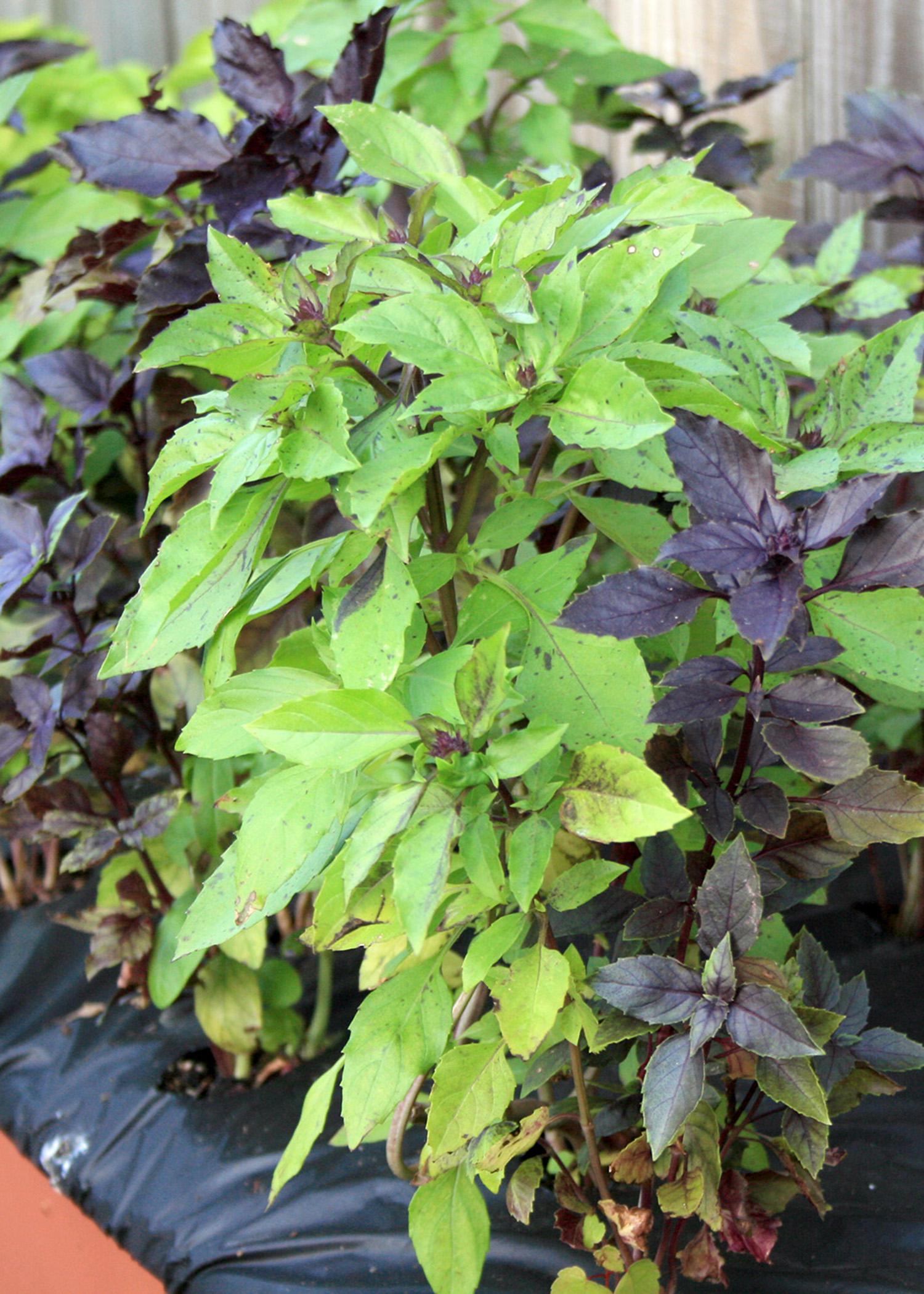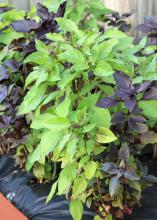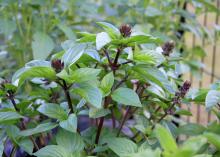Information Possibly Outdated
The information presented on this page was originally released on September 23, 2013. It may not be outdated, but please search our site for more current information. If you plan to quote or reference this information in a publication, please check with the Extension specialist or author before proceeding.
Containers extend fresh herb season
With fall officially here, many gardeners hooked on cooking with herbs may start to worry about how they’re going to cook once it’s too cold to grow herbs outside.
Although many gardeners still have herbs growing strong, others may dread reaching for the little red and white cans in the cupboard once it’s too late to go outside and snip something fresh from the garden. If that’s your worry, you can make some preparations now to keep you enjoying those fresh summer herbs during Mississippi’s winter months.
The first way to avoid using dried herbs is to grow your own indoors over the winter. I’m happy to tell you that it’s really easy to propagate many summer herbs and grow them during the winter months.
Start by collecting 3- to 4-inch-long cuttings from new growth. Many garden herbs are producing new growth as the temperature decreases from summer highs. Use sharp scissors or pruners, being careful not to smash the cut ends.
Once you collect the stems, there are two options for propagation.
The first is to plant the cuttings in small pots, first dipping the cut ends in rooting hormone to encourage faster rooting. This powder is readily available at your favorite garden center. Plant the stems in a good-quality peat or seedling mix and water well. Preserve humidity and moisture by covering the pots with a clear plastic dome. A plastic storage bag works great with round pots. Roots form after about four to six weeks, and you can place the plants in their permanent containers.
The second option is one you probably learned from your grandma. Simply place the cutting in a jar or glass of water. Replace the water every day, and the cutting will start to root in as few as seven to 10 days. Once the stems have rooted, they are ready to transplant.
Since you will be growing these herbs inside your window sill, be sure to choose attractive varieties so you can enjoy their visual aesthetics and culinary delights.
Many of the basic herb species are available in variegated or multicolored foliage. Remember, we eat with our eyes as well as our mouths. The multicolored varieties work well in recipes, but their best use may be as flavorful garnishes.
If you want fresh herbs but don’t want them as permanent winter window accessories, consider growing them in containers instead. This way, they can spend time outside when temperatures are moderate and then be brought indoors during cold snaps.
Common sage is used in many traditional winter season recipes. Although you can grow the plain green varieties, one of my favorites is Tricolor. This selection has green leaves with white margins accented by the addition of pink and/or purple. It looks gorgeous in a container.
Basil is one of the top herbs gardeners want to grow, but it also requires the most attention when the temperature dips. Purple basil is in high demand, and it comes in some beautiful varieties. The Mississippi Medallion winner Purple Ruffles is an outstanding plant that has fragrant, deep-purple leaves with curly margins.
There are many colorful and tasty herbs that you can grow during the winter months, and many of these are available right now at your favorite garden center.
Among the benefits of growing herbs in containers during the winter are that they are manageable and require limited weeding. You will be surprised how many herbs you can grow in a tight space in containers. Be sure to place your containers where they will be easily accessible, and you will always be able to enjoy the fresh herb goodness whenever the recipe calls for it.
So even if you only have a small patio, balcony or a sunny kitchen window, you can still enjoy fresh herbs all winter.









